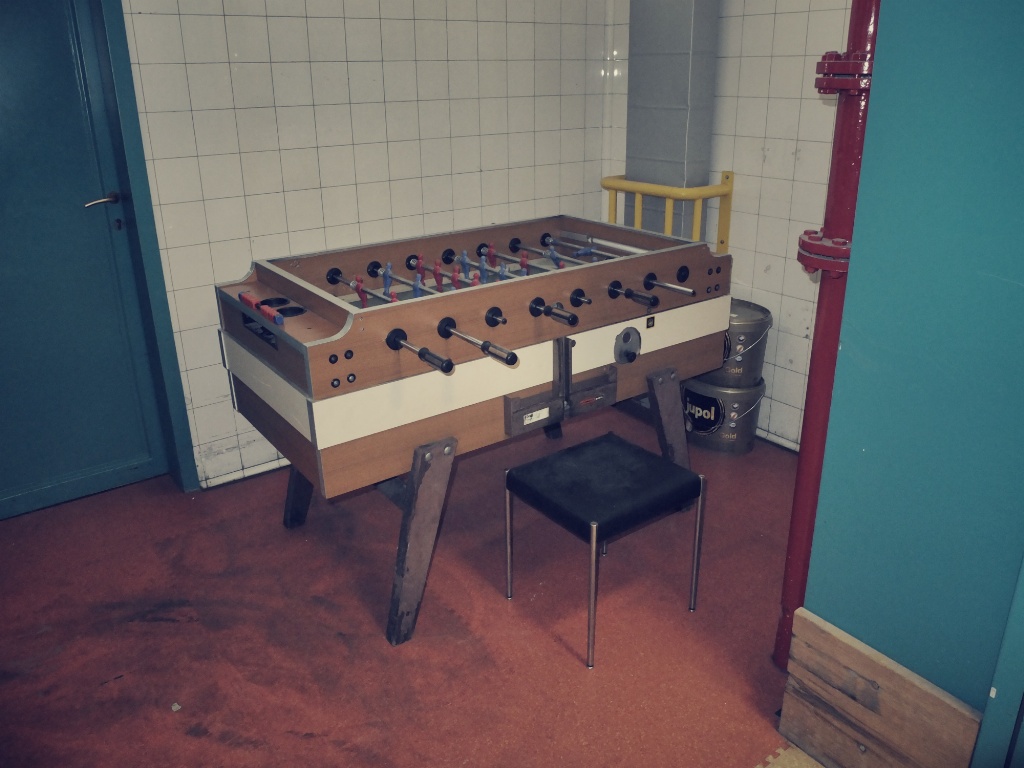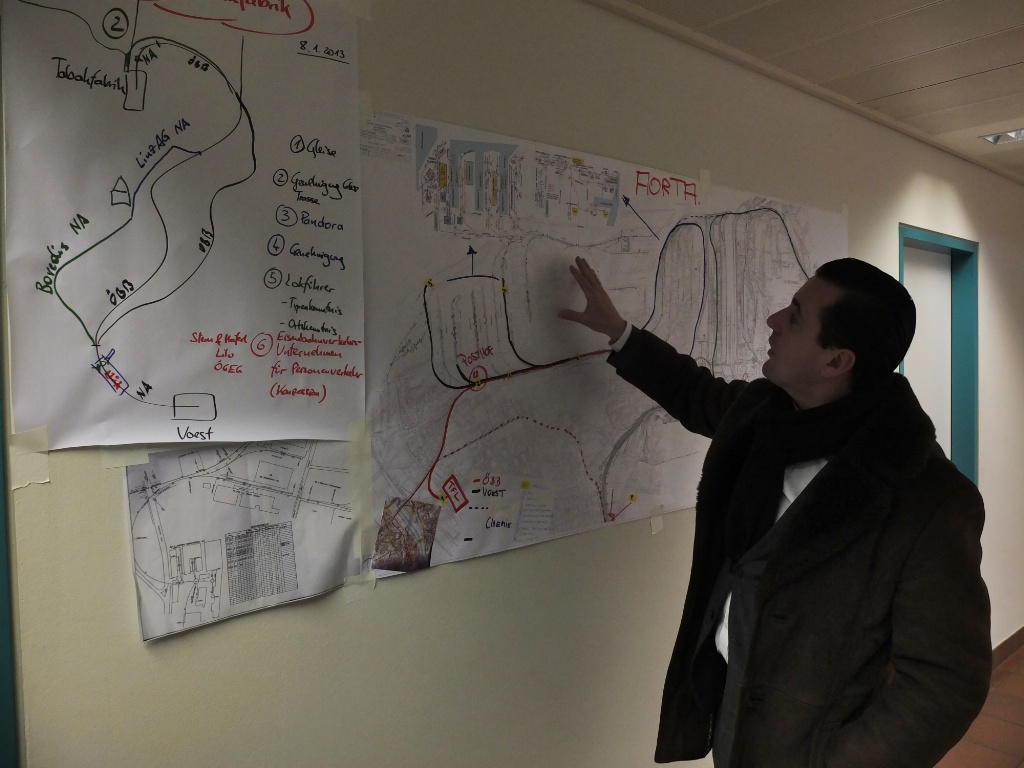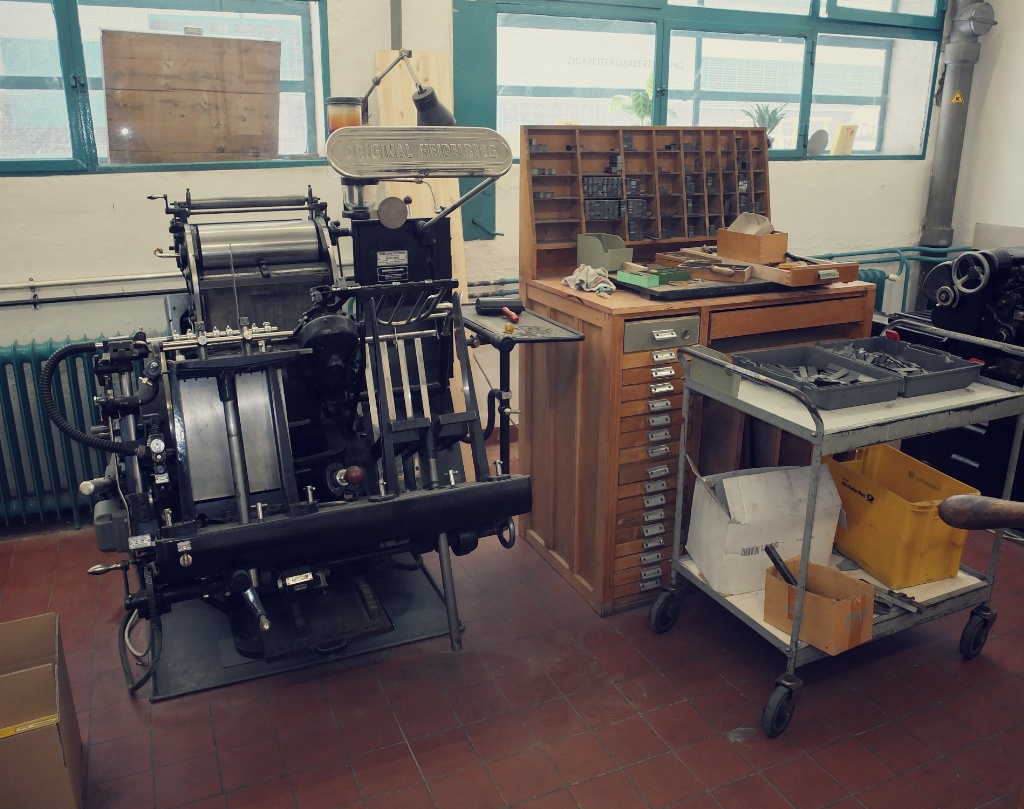Tabakfabrik Linz – New Neighborhood, New Opportunities

For many years, Linz’s Tabakfabrik tobacco processing plant was a city landmark, a symbol of work and prosperity. The gloomy days of privatization and the accompanying decline in significance are over. What began to a certain extent with REPAIR, the 2010 Ars Electronica Festival, is now being continued under the direction of Chris Müller. The Tabakfabrik has become a place for creativity, for openness, for the making of products by human beings for human beings. Which is why this is just the right setting for Ars Electronica Solutions’ studios. We recently had a chat with Chris Müller, who’s responsible for the temporary use of the Tabakfabrik.
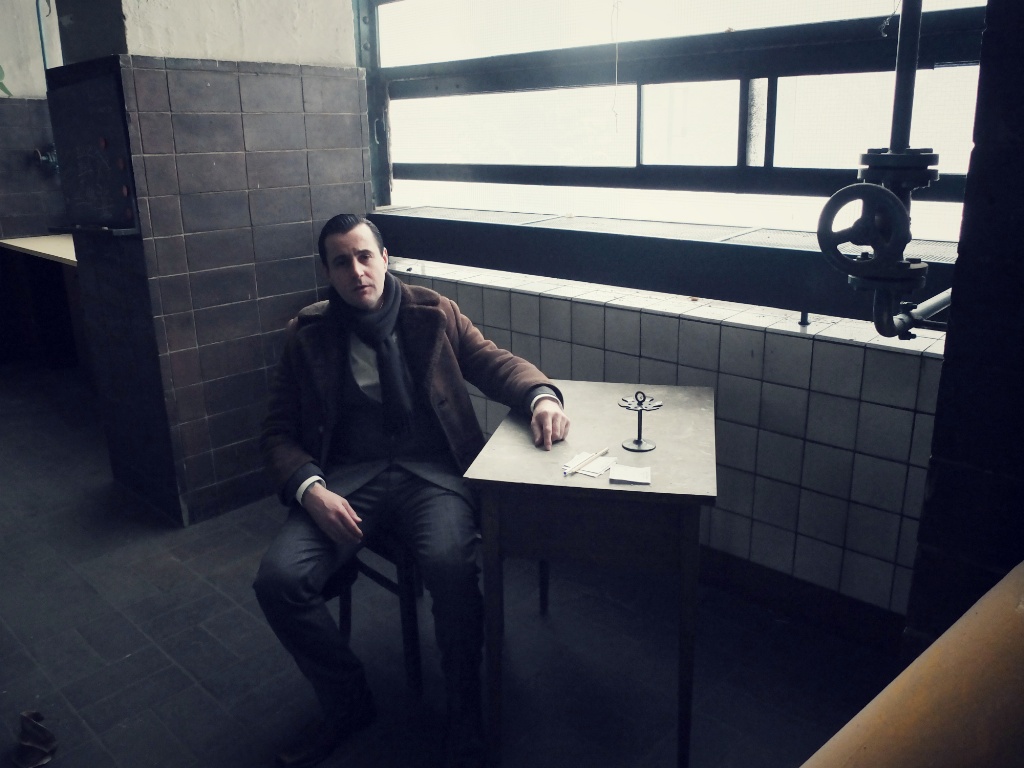
Chris Müller at the KraftWerkStadt.
What significance does the Tabakfabrik have for this city?
What you have to understand—or, hopefully, do understand—is that we don’t consider ourselves a building. We’re an enabling neighborhood, a focused Linz. Linz justifiably calls itself a city that makes things possible. We are a production site, which is apparent from a lot of different things—for example, why Ars Electronica Solutions is such a perfect fit here. We’re a district, a part of this city, not a building. We’re not fomenting fears of competition, and if we do then they’re hard to contest. We’re not an opera house or a museum. We’re a workshop, a lab, a set of framework conditions for people who want to come here and develop something together with us. For us, collaboration is a very important effect. We have premises that function well, and when we like people’s ideas, then we want to help them bring their ideas to fruition. That’s the most important thing.
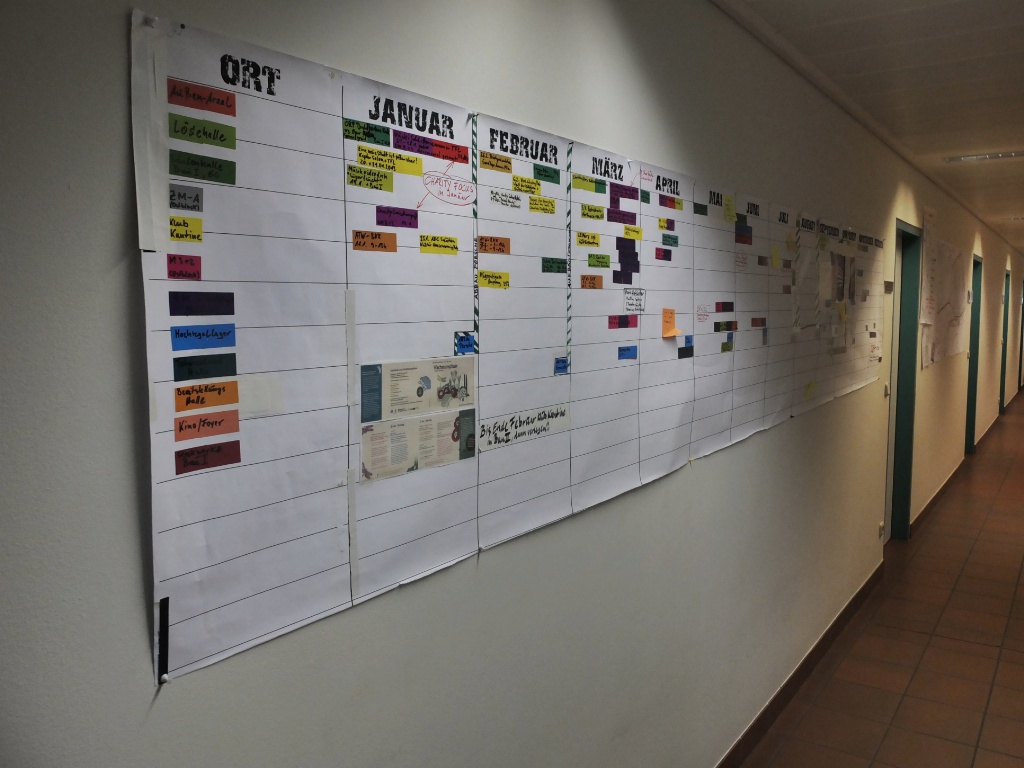
The agenda for 2013 ist quite full already.
And then, you have to know that the plant has a long history that displays numerous parallels to today. André Malraux said: “Whoever wishes to read the future has to leaf through the past.” And if you go about this earnestly, which we have indeed done, then you discover many things. For example, that Peter Behrens was a painter and was repeatedly criticized by architects; the fact that he built structures was highly controversial. Because he wasn’t an insider in this profession, he was able to develop a different perspective, saw things from an interdisciplinary point of view. After all, he invented corporate design. He did it all—from the coffee cups to the stools to the color mixtures. And he patented everything. Because he was an artist and not an architect, he wanted to build a society and not a building. For example, he built this banana, this arc, into Building 1, and he did so for one reason: He wanted to utilize this artificial horizon to make people feel bigger in comparison to the space. The human being was at the center of all his considerations. This is the diametrical opposite of a splendid edifice built for representational purposes.
This is certainly a parallel: designed by an artist, and now being used by artists.
Construction of the Tabakfabrik proceeded from 1930 to 1935. It was built in stages for financial reasons due to the global economic crisis. Just like today. Now, we’re also in the midst of a social crisis, though thankfully this has not resulted in armed conflict in which you’re never totally sure if the ceasefire is temporary or not. Anyway, some things have changed.
What’s also enormously important is that the Tabakfabrik was originally established as an emergency measure in 1850 when the woolens factory here went bankrupt. Even then, the Tabakfabrik was already a symbol of jobs, of economic upturn, of transformation from woolen production to tobacco processing, which worked quite well.
Now, for a variety of reasons, this model has run its course. So, we’re in the midst of another crisis and we turn to an artist to come up with a fresh start.
The Tabakfabrik has great symbolic power in a time when you come home and turn on the TV and all you see are scandals, how it’s all going down the tubes, my kids will have it worse than I did, and it doesn’t look good for the environment either. But there’s a place that gets across a bigger picture; where it’s better; that says: come to us, there are better workplaces here, a better design, better social framework conditions, and a better future.
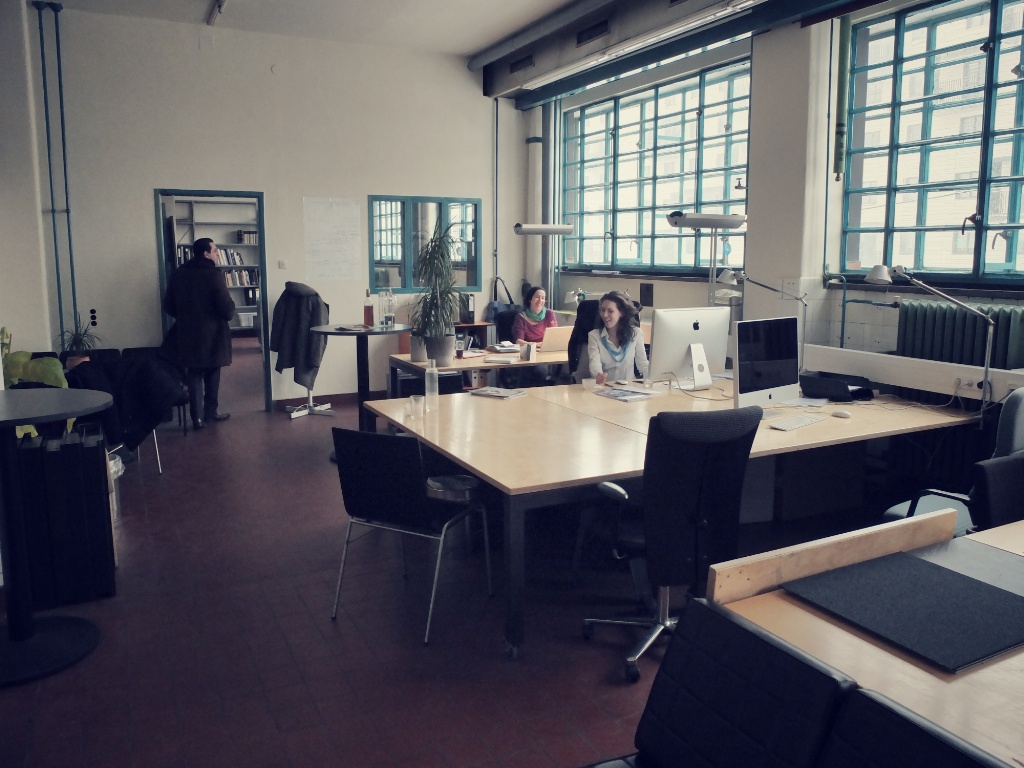
Lack of space is not one of Tabakfabrik’s problems. This is DECENTRAL‘s office.
4020 Linz – Tabakfabrik 2040; what does the urban quarter of the future look like? We weren’t out to make a copy; the key to success is daring to take a great leap forward. It’s fascinating that people say that they actually want to work in a place that’s more than just a workplace. This meta-level gets into people’s heads. And you also see that there’s construction constantly in progress at the Tabakfabrik—a panel goes up here, a window is removed there, somebody’s moving in, the facility is in continuous transition, and that’s also a lot of fun.
This is different from Ars Electronica. You have your seismographic competence, you have your feelers out everywhere, and when they come up with something, the ideas are implemented immediately. We have time, and we set the trends ourselves. You identify them, we put them into action.
Now comes the fusion of the Tabakfabrik and Ars Electronica. You investigate the future, and then we’re able to develop a solid concept once we know in which direction things are headed. This is a fantastic partnership. This is why it was so important to me for AE Solutions to join us here. Just like in a factory, the chain of production is very important to me. You catch wind of them, you’re the trend scouts. There are inventions, products for festivals, and Solutions gets them to the point of serial production. Here’s where they enhance and develop these products, present them to clients, and launch them on their way around the world.
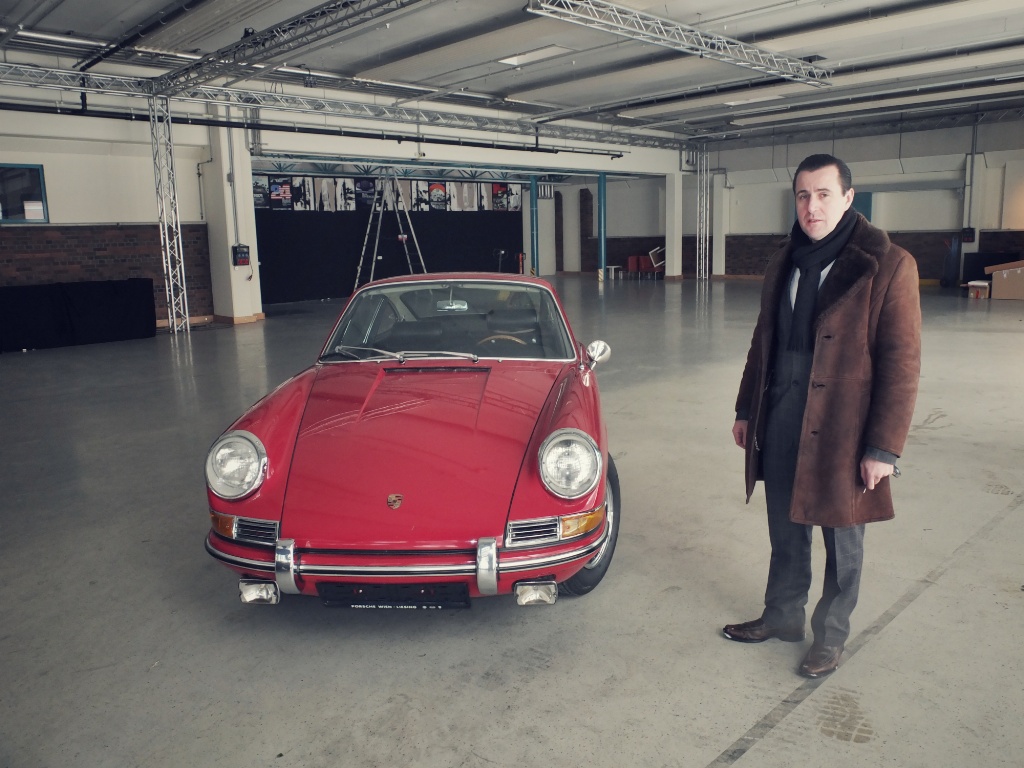
This remaining piece of the Porsche-Exhibition is not Chris Müller’s new company car.
That brings us to something we’re all interested in—namely, to a producing place; to a production elite and not a consumption elite. Now, when you very closely scrutinize this term “elite,” then it’s important to differentiate among power elite, consumer elite, production elite, and there are probably a few more. Power elites and consumer elites are often identical—people who have a lot of money, regularly attend the theater, and determine certain trends. Working people, on the other hand, are the production elites. And that brings us to Richard Florida’s concept: the creative class is the new working class. And that brings us back here, to this neighborhood of workers, which is a perfect fit here in Linz, one of the few European cities where there are more jobs than inhabitants. And this is why cooperation between the Tabakfabrik and Ars Electronica is practically inevitable in Linz, a place in which the future is taking shape right now.
So you’re saying that the Tabakfabrik can also be seen as an expansion of the Futurelab and Solutions?
Precisely, as a continuation. And I wouldn’t be at all surprised if this cooperative effort develops something completely new. I believe that big things are happening here right now.
Another nice symmetry is that Ars Electronica CFO Diethard Schwarzmair was one of the Tabakfabrik’s last chief executives, together with Beppo Mauhart. So there’s a close connection on the personnel level too.
When so many factors coalesce, then it works. You can’t just put something out there and expect it to take off on its own. That doesn’t happen.
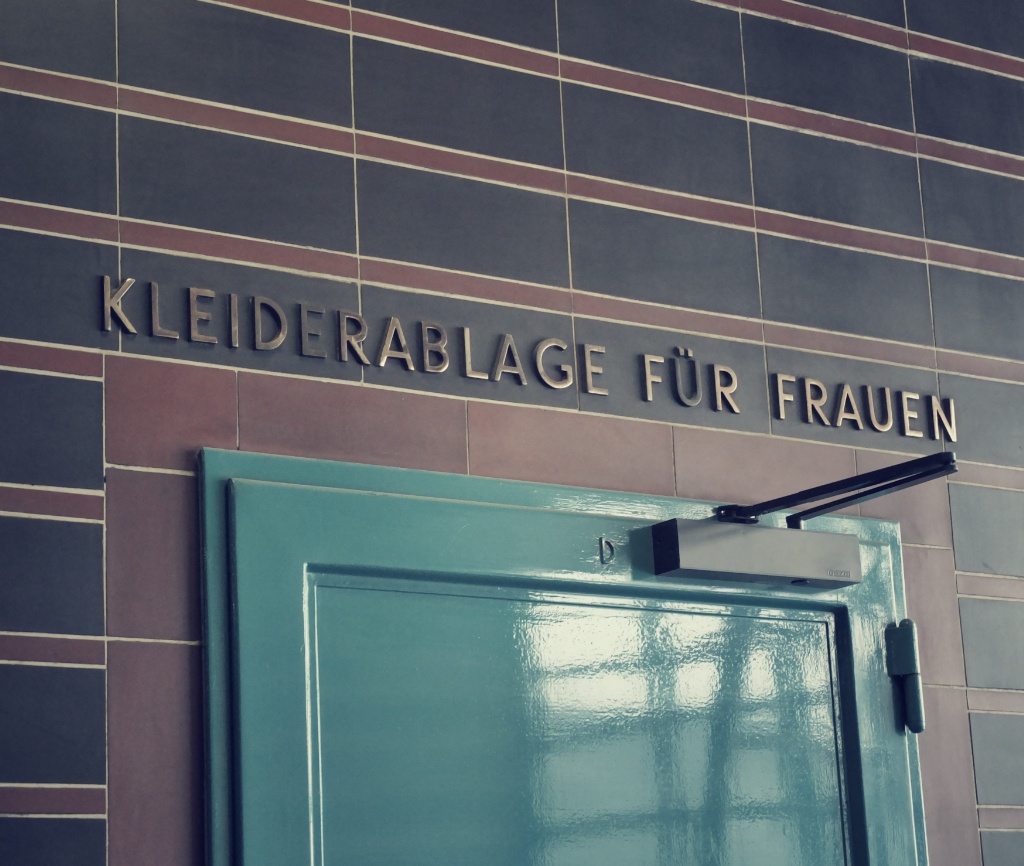
We’re morphing a tobacco processing plant into a production palace, a meeting place for producers and not consumers, a setting for a process of exchange about improved design, about solutions, and that, of course, attracts consumers. And there will definitely still be areas where events take place, but that’s more of a sidelight. The focus is on production.
What makes Linz so special in comparison to other places? What functions in Linz that wouldn’t work somewhere else?
A lot of things. For one, this city has reinvented itself in the last 20 years. This constant search, the knowledge that good things are coming this way, have defined Linz as a transforming city in comparison to, say, Salzburg.
And there has intentionally not been a concept dictated by the powers that be here. When I took over this job, I thought to myself: “So, any day now, somebody’s going to call and tell me how to go about this.” But that never happened. We’re the plan. Something grows, it gets media coverage, is evaluated; we have to fertilize it and trim it if we want it to flourish. There is a high degree of readiness on the part of local government leaders to go with the flow, to experiment, to provide some latitude.

Gerhard Stummvoll, locksmith, and Dietmar Hruschka, electrician, where among the last to work for the Tobacco-Industry at the Tabakfabrik. Now their know-how is put to work for repairs and events.
The Tabakfabrik is a highly compact cluster, an autopoietic system. There’s a world and there are environments, and you can interact with them but it’s not mandatory. The most important thing for the Tabakfabrik is that we take a long, close look at the people who come in here. There are framework conditions but, basically speaking, when it comes to creativity, you can’t predict whether something is going to fly or not.
We want to nurture this creativity but there’s no silver bullet other than implementing the best possible framework conditions and attracting outstanding people. This is essential for autopoietic systems—you need people who can interact harmoniously, who have social skills, and you need spaces where they can intermingle, where collaborations can take shape. This is crucial.
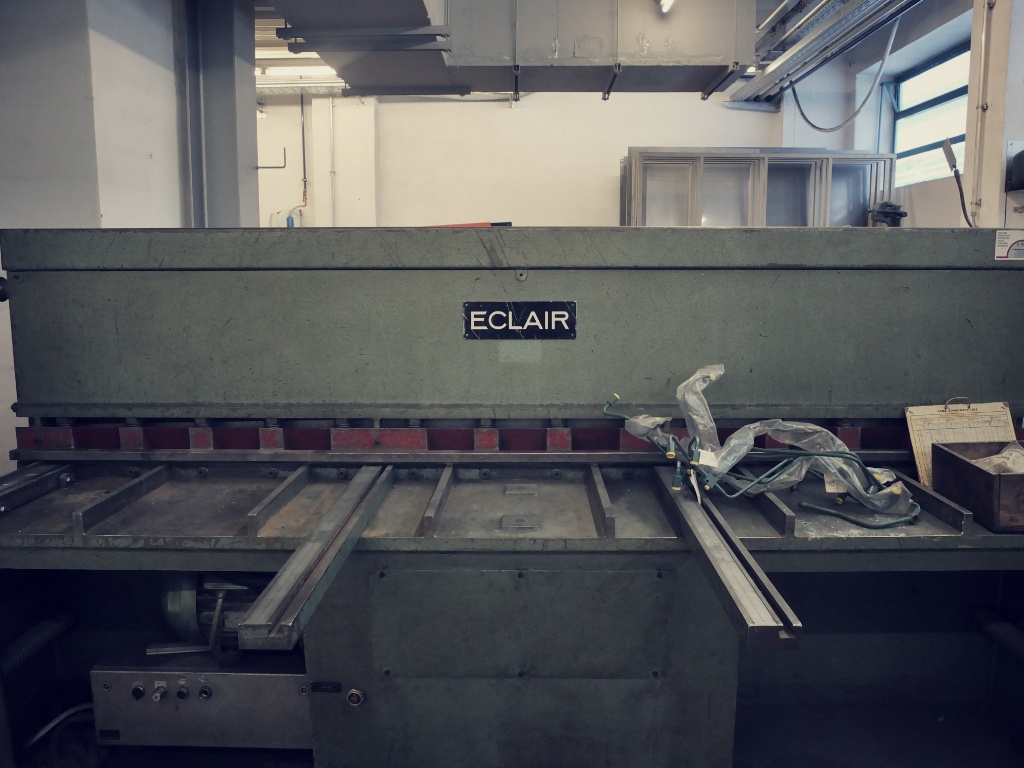
Of course, this can be managed and tweaked. When something works well, we take a close-up look and discuss the fundamentals. Actually, that’s all I do. I’m continually on the go throughout the facility, chatting with our people. Concepts are reconsidered on an ongoing basis. If there’s a problem, we want to know why. We’re constantly taking a reading of the atmosphere.
There’s a clear direction we want to take, but we can only do this jointly. It would be impossible to go it alone.
The Tabakfabrik has an obligation to be an experimental space, to be a neighborhood, a public space, which is why it’s been reconfigured: Peter Behrens Platz is now a public square. You have to experiment to invent something new. The classical variations are played out; now we have look at where we go from here.
And the people are really enthused. They didn’t expect to find this. There’s been a lot of positive feedback, which is solid backing for the political decision-makers and motivation for us.
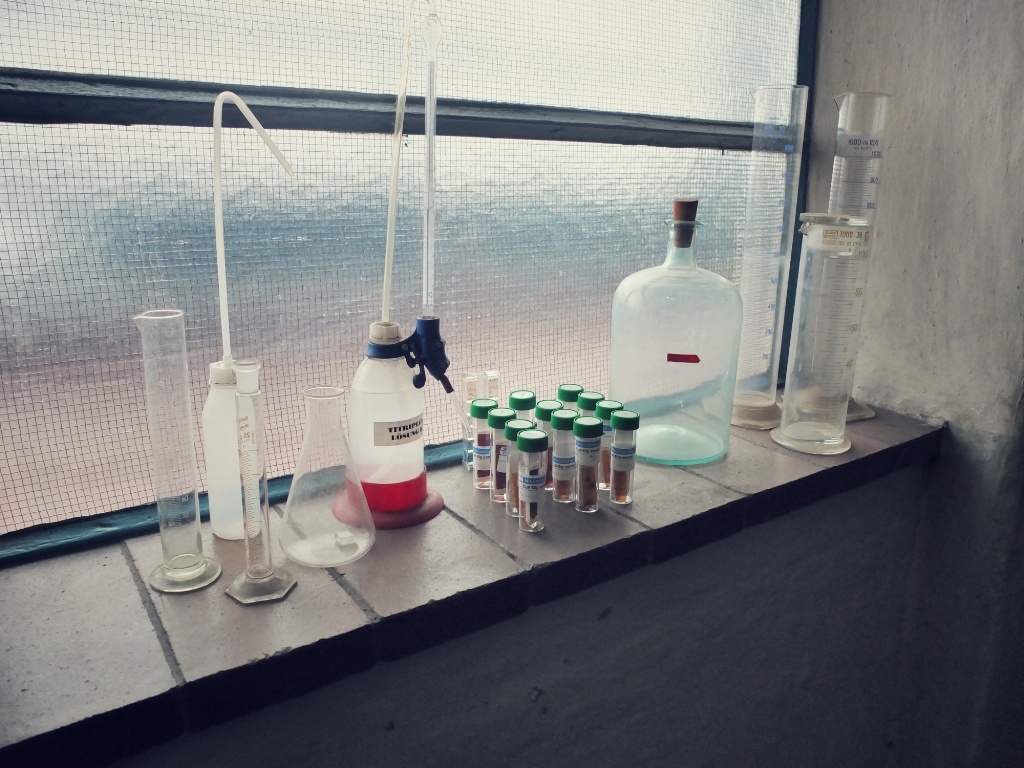
When you refer to the Tabakfabrik as a part of town, to what extent to you mean this?
For example, in conjunction with our Growth Phase project, we’ve launched an effort to make a 250m x 3m strip of grassland available to our neighbors as an urban garden, which is indicative of our broader concept of this term. Our definition of a part of town is more in terms of content than in geographic terms. We want to work together on something bigger. People want to go to a place and not know in advance what it’s going to look like. But that’s exactly what has formed our model, literally.
And speaking of models: All those project designs for the use of the Tabakfabrik—I’ve had them taken away. Not because I don’t appreciate them but so that this doesn’t turn out like in church: You have a specific image and that puts a stop to pioneering thought. We can’t have something like this until we commence work on Building 2. And not before.
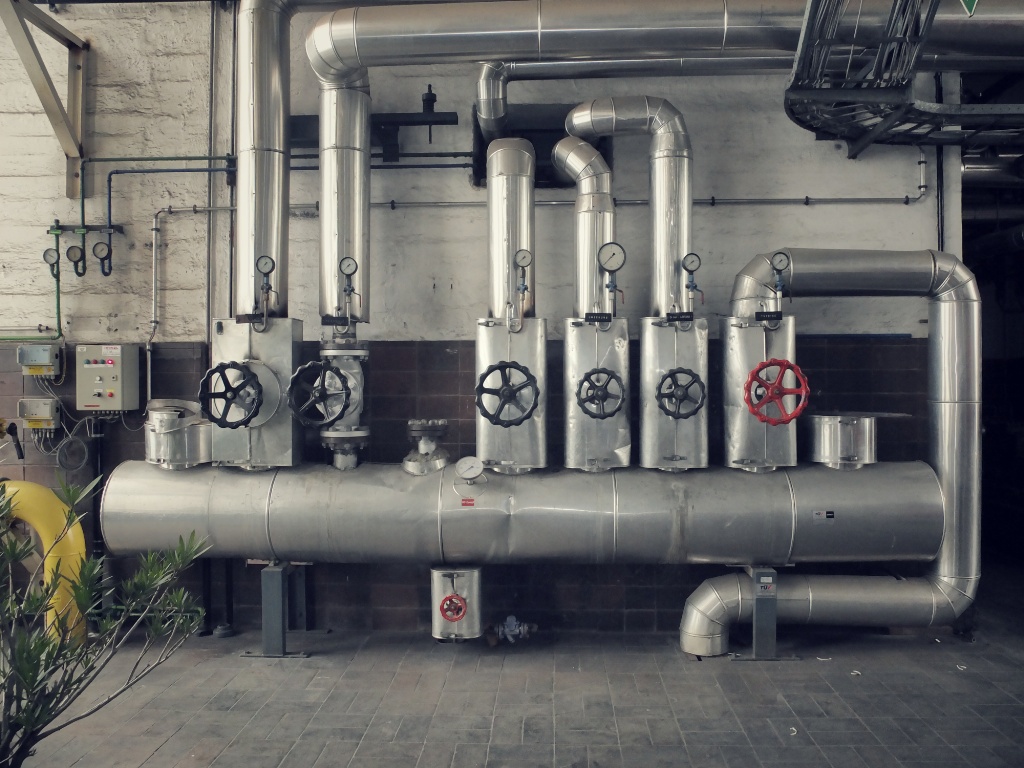
Parts of the machinery of the former powerplant which is turned into the KraftWerkStadt.
This isn’t failure; it’s a clear strategy. Every individual has to give some thought to this; otherwise, we all just make a binding commitment to one single image and there’s no deviation allowed.
How’s the collaboration with AE Solutions going?
Happy, friendly, super neighborly relations. It’s actually quite free and easy. For instance, the original plan called for installation of a glass door, which would have enclosed AE Solutions’ studios. This was cancelled due to budgetary constraints, but the fantastic effect is that people don’t even know any more where their workplace begins and ends. This was a key cognitive breakthrough, in that people didn’t know where a particular person’s proper place is. There wasn’t even anything to suggest this. Then we began to put up maps. Two day later, Solutions posted their diagrams. Everything’s clearly evident, intermixed. And that’s a good thing.
And it’s not always pure harmony. In the theater, I learned that, by causing a bit of friction, people can spur one another on to higher achievement.
And one more keyword: What’s aorta all about?
For a year now, we’ve been thinking about this, sounding out opinions and positions. A weakness of Linz is its high degree of concentration along Landstraße. Giving some substantive thought to what a neighborhood is and where its boundaries are brought us to consideration of the partners we work together with, how to strengthen links with them and what that means.
This is a life-giving artery that continues to flow along the second streetcar line. You alight at Tabakfabrik, ride on to voestalpine and so forth.
We’re very much oriented on cooperative relationships. We don’t just take our individual campus into account. We ask: Who are our friends, and what’s our turf? We’re a collaboration detector, but we also realize that there’s still a lot of work to be done here. With Ars Electronica this was no problem, but there are still a few pockets of resistance around town.
Location, style, lifeline, an Aorta Festival in which lots of institutions collaborate on a theme—this is where we’re headed, and this can work only in cooperation with others. Our brand is that we aren’t a brand, that we’re a sum of individual particles.
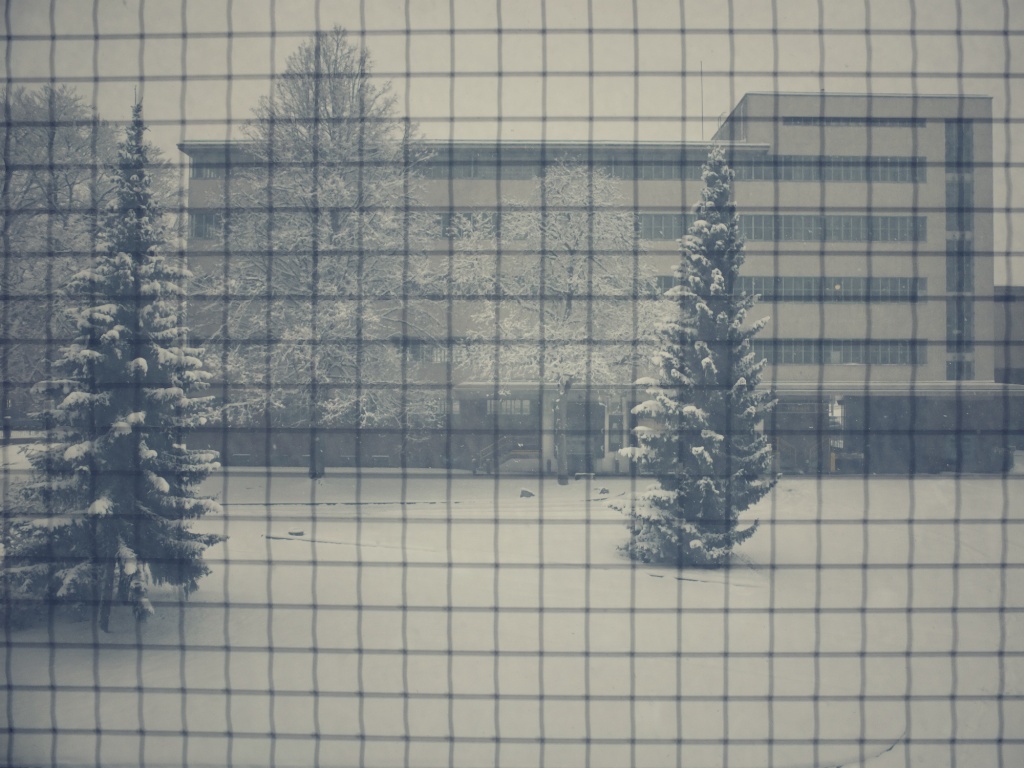
How far out beyond Linz’s city limits do your feelers reach?
Internationality is important since it can be assumed that, in time, a city’s creative potential is exhausted. Even after providing working space for all these creative people in the Tabakfabrik, we still have 60,000 m2 vacant. Vienna, Munich, Mexico City—we’re weaving a network as extensive as possible. That’s why Ars Electronica is so essential to this, because of their international network.
But this is a decisive factor not only for us but also for Linz as a whole.
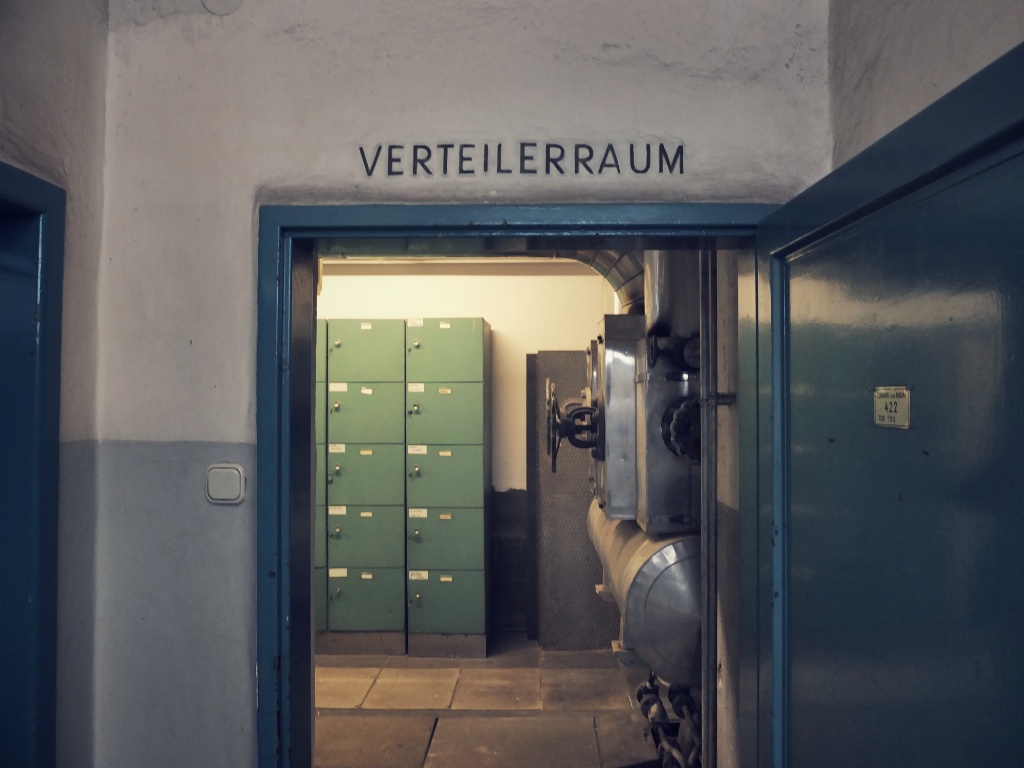
After all, for modern manufacturing, the power plant is the centerpiece. We’re a PowerPlantPlace. There used to be metalworking & woodworking shops here. We want to set up a FabLab here together with Ars Electronica, which will dovetail with the manufactory in the next phase. This would also become the world-class brand—a place where ideas, technology and applications blend on a highly professional level. If this succeeds, the world will beat a path to our door.

Our motto: “Good people keep company with even better people.” This used to be a pretty anonymous place. That’s why I set up my office right by the front entrance—as a sort of counter-measure, I appointed myself concierge. But gradually, the individual components are beginning to speak for themselves and I can sort of disappear into the foreground, or rather ease myself into the background. Now, Part II is underway: we’re getting some attention; there’s talk on the street about Tabakfabrik.
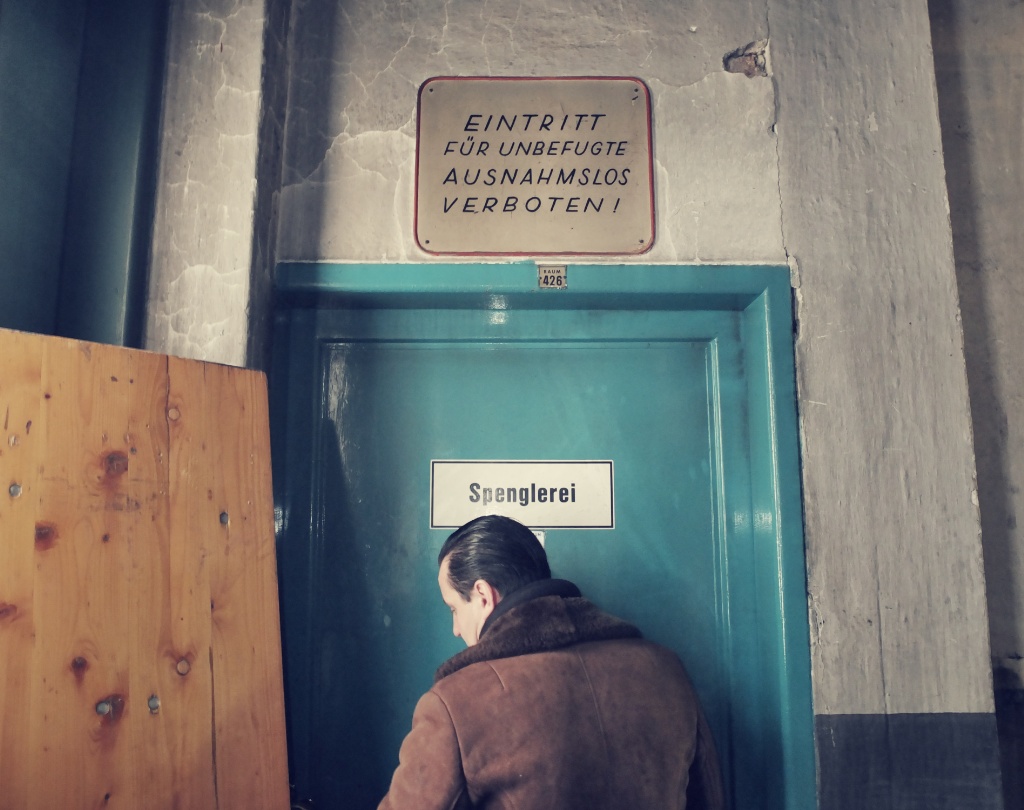
Shortly after construction of the Tabakfabrik was completed, Bertolt Brecht formulated his “Questions from a Worker Who Reads”: “Who built the seven gates of Thebes? The books are filled with names of kings. Was it kings who hauled the craggy blocks of stone?” The big question: Public versus private, what belongs to whom? A detailed and comprehensive analysis of these classifications brings out the fact that the most beautiful places belong to us. Everything has to be turned about. Including that the 5th Upper Level, which is the most beautiful, belongs to all of us. And that the Ground Floor will remain a logistics ring so that everything can function smoothly despite the fact that the Ground Floor is always one of the most desirable locations. We want to provide for the hundreds of people who work here—send carrots up to them, provide a functional transportation system for them. We don’t want a few people to select the prime cuts and appropriate them for their exclusive enjoyment. Otherwise, this system won’t work.
And we’ve answered the question of seven-gated Thebes. We’re dedicating this development and this mission to the folks who hauled in the rocks—namely, us.
In this spirit, there could hardly be a better place to enable Ars Electronica Solutions to prosper. Next, this blog will publish an interview with Michael Badics and Bernd Albl, co-CEOs of Solutions so you can find out about the plans, ideas and visions of Ars Electronica Solutions.
